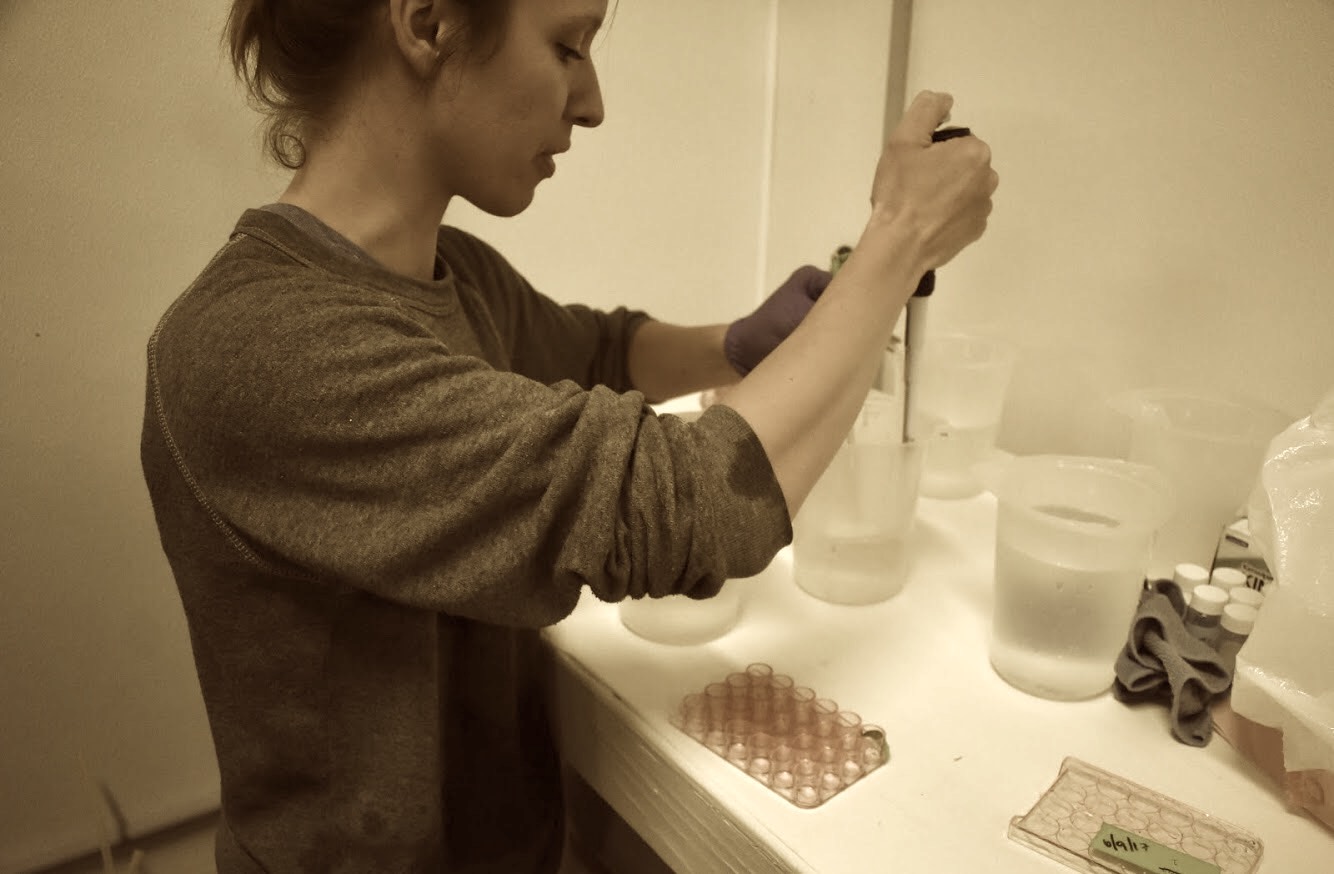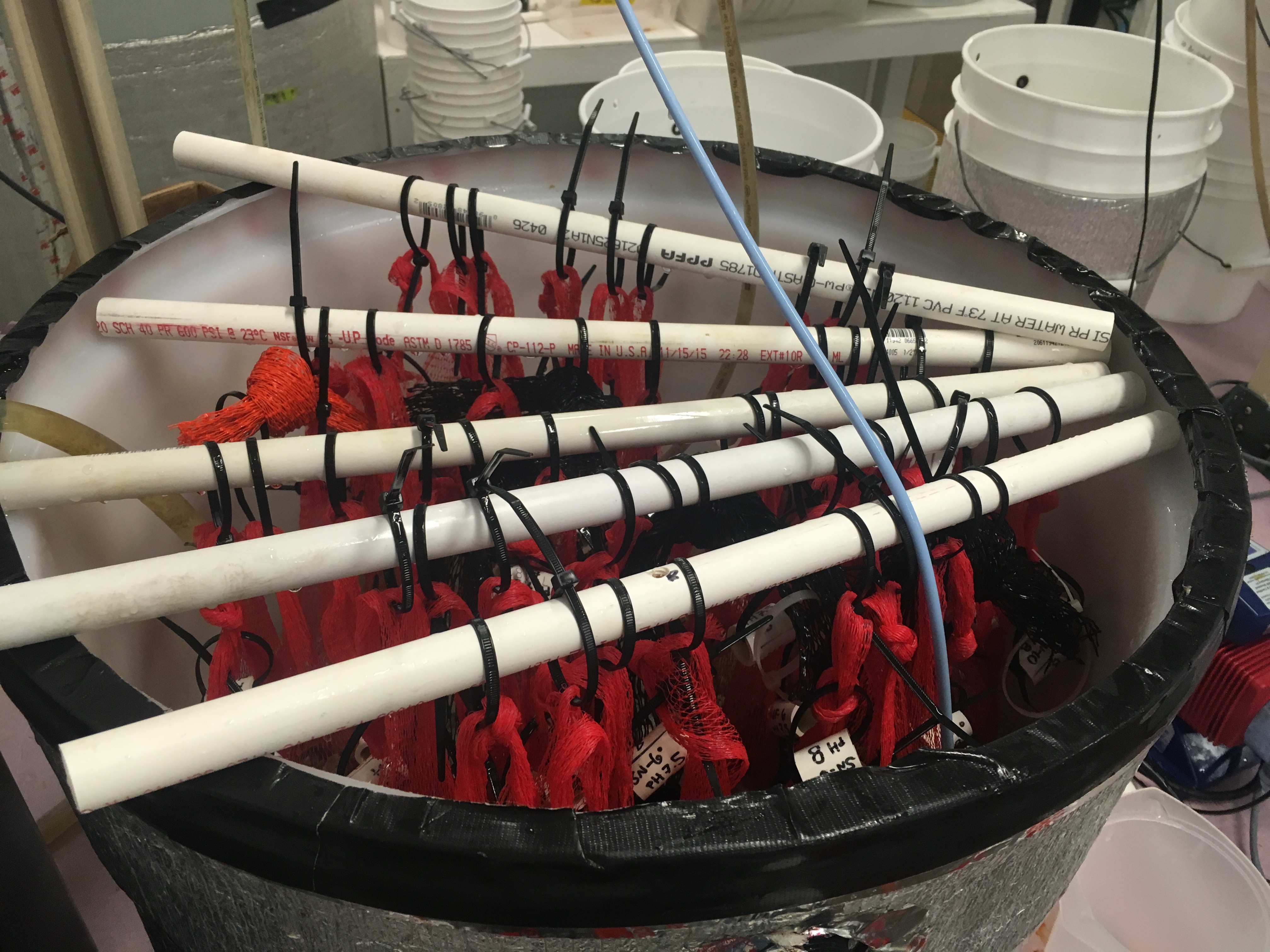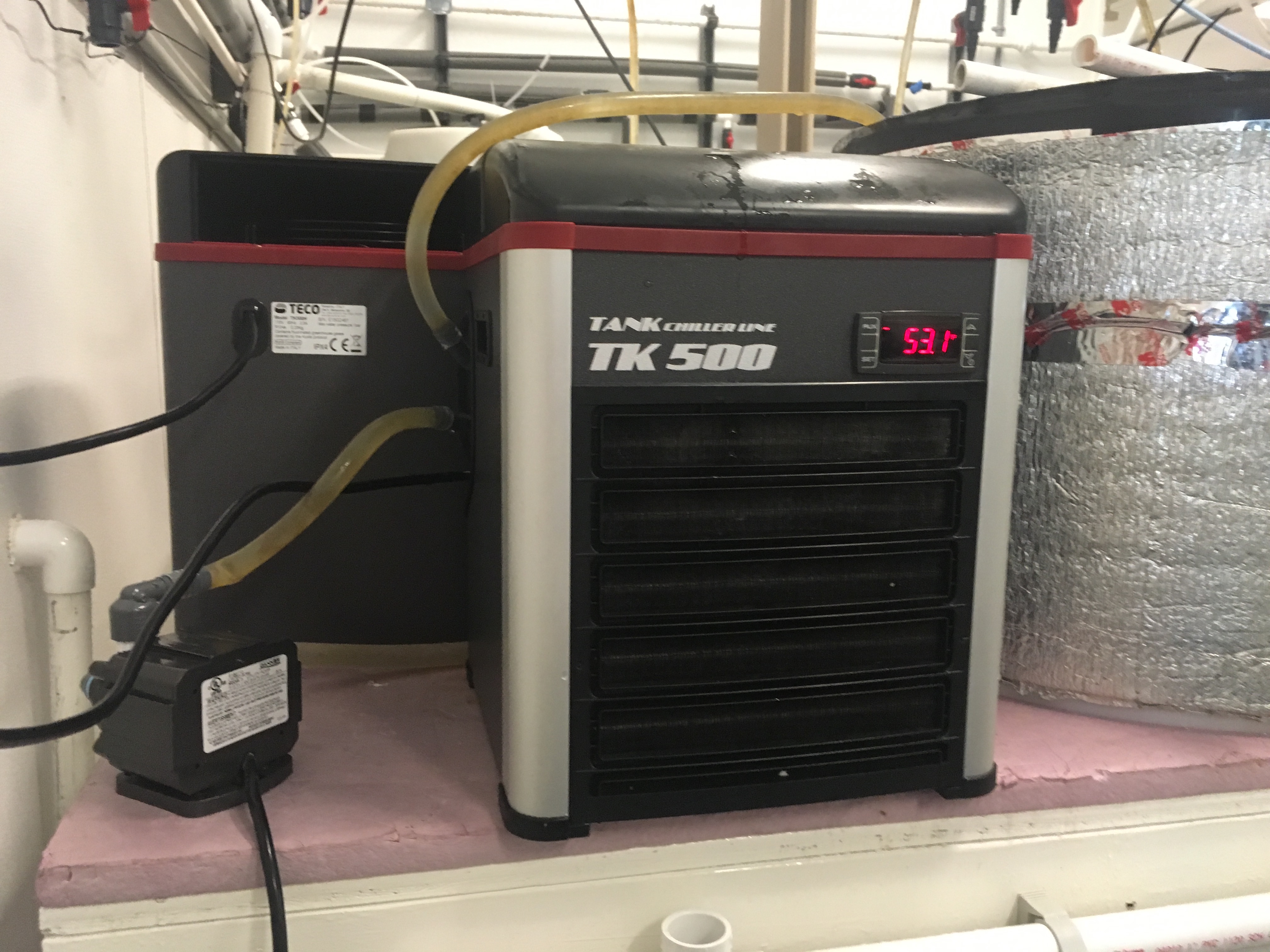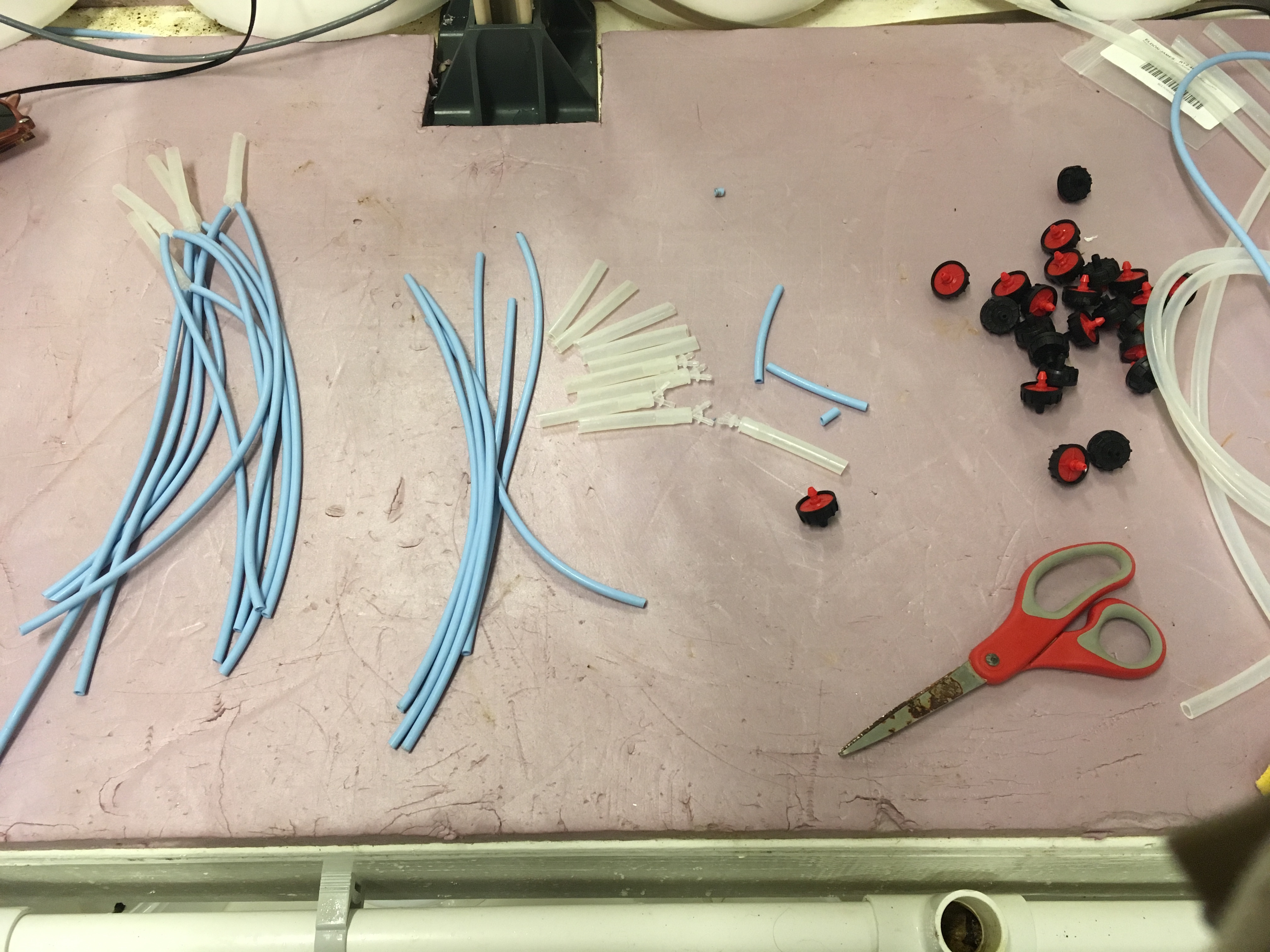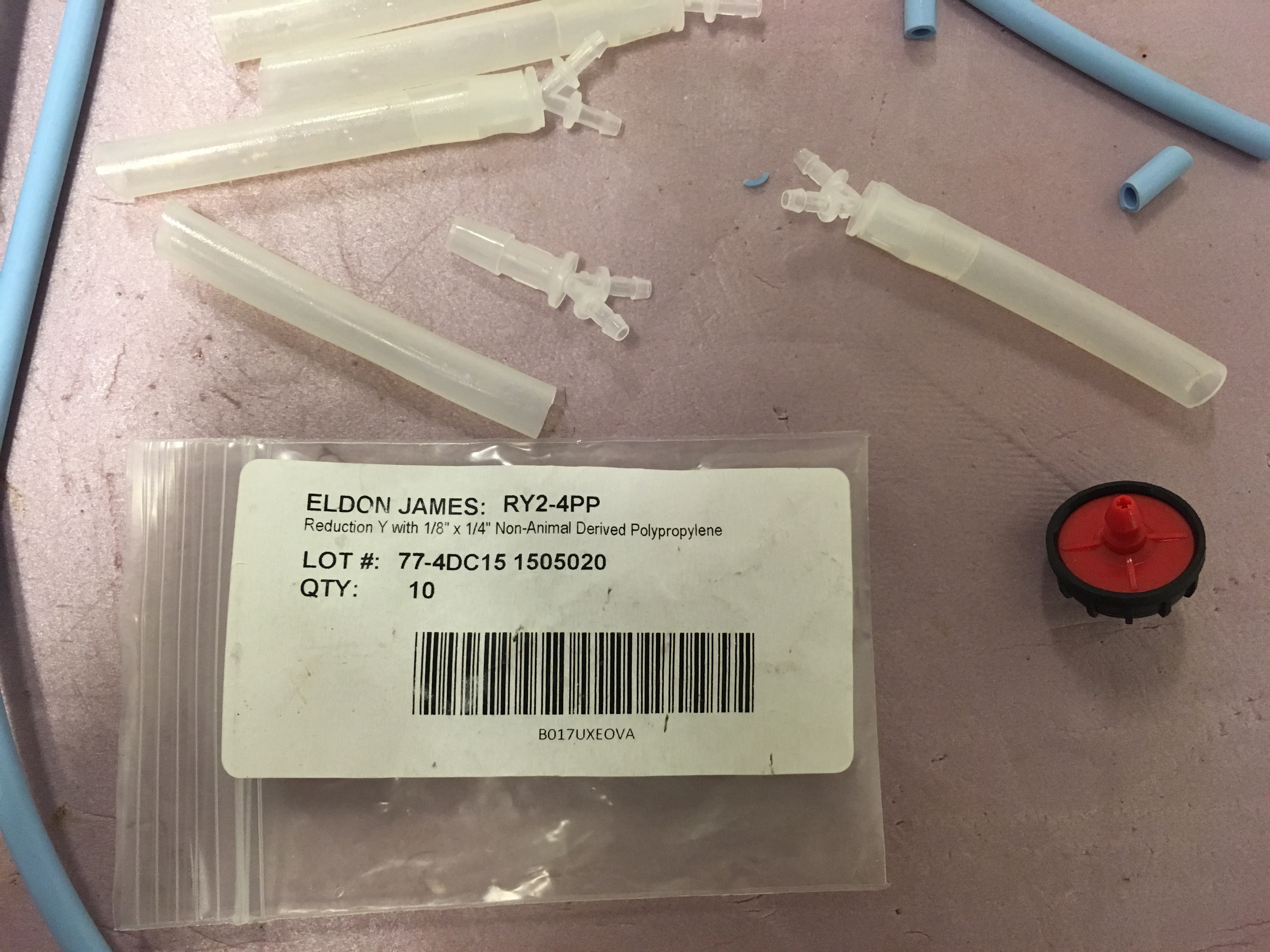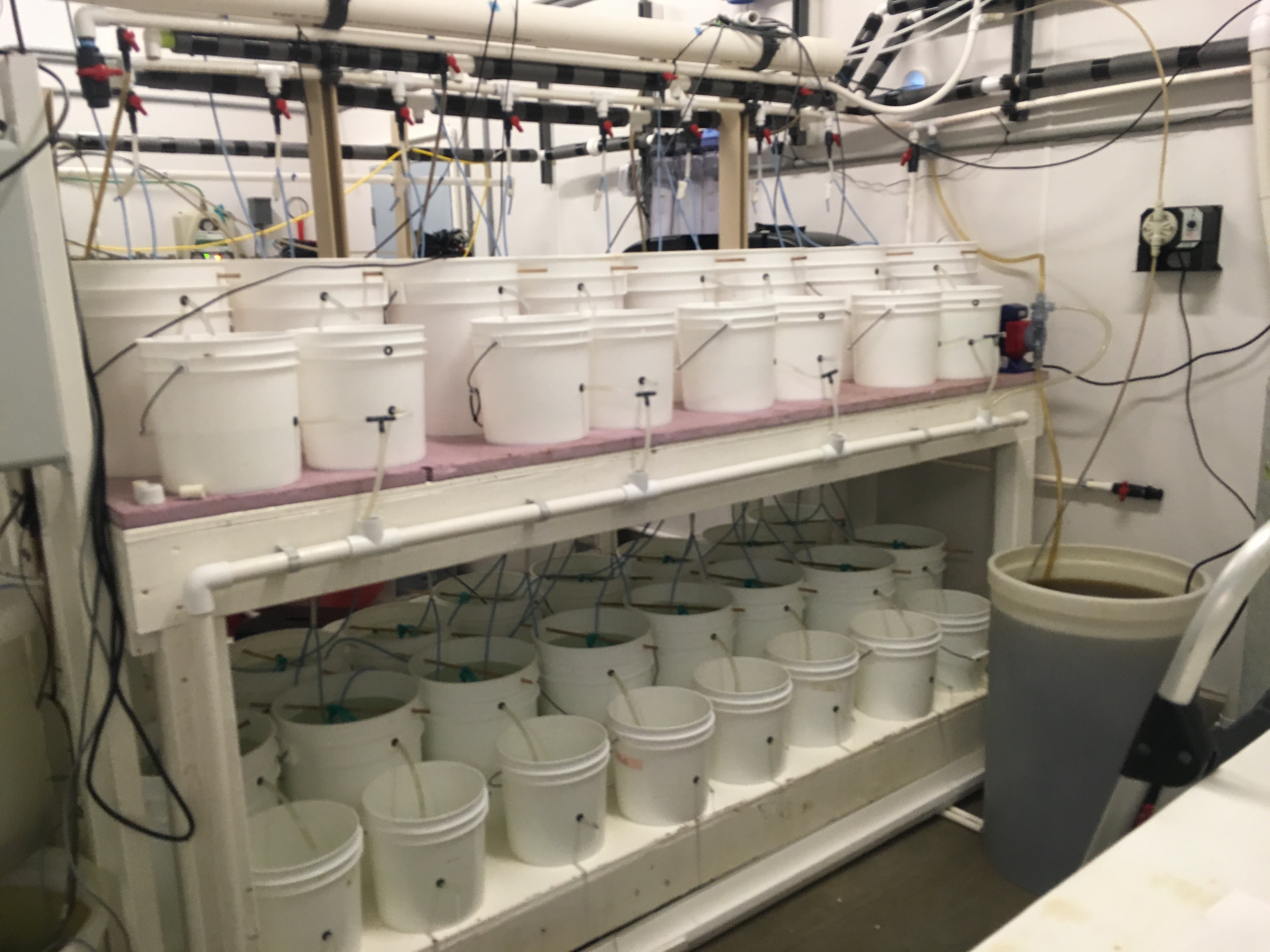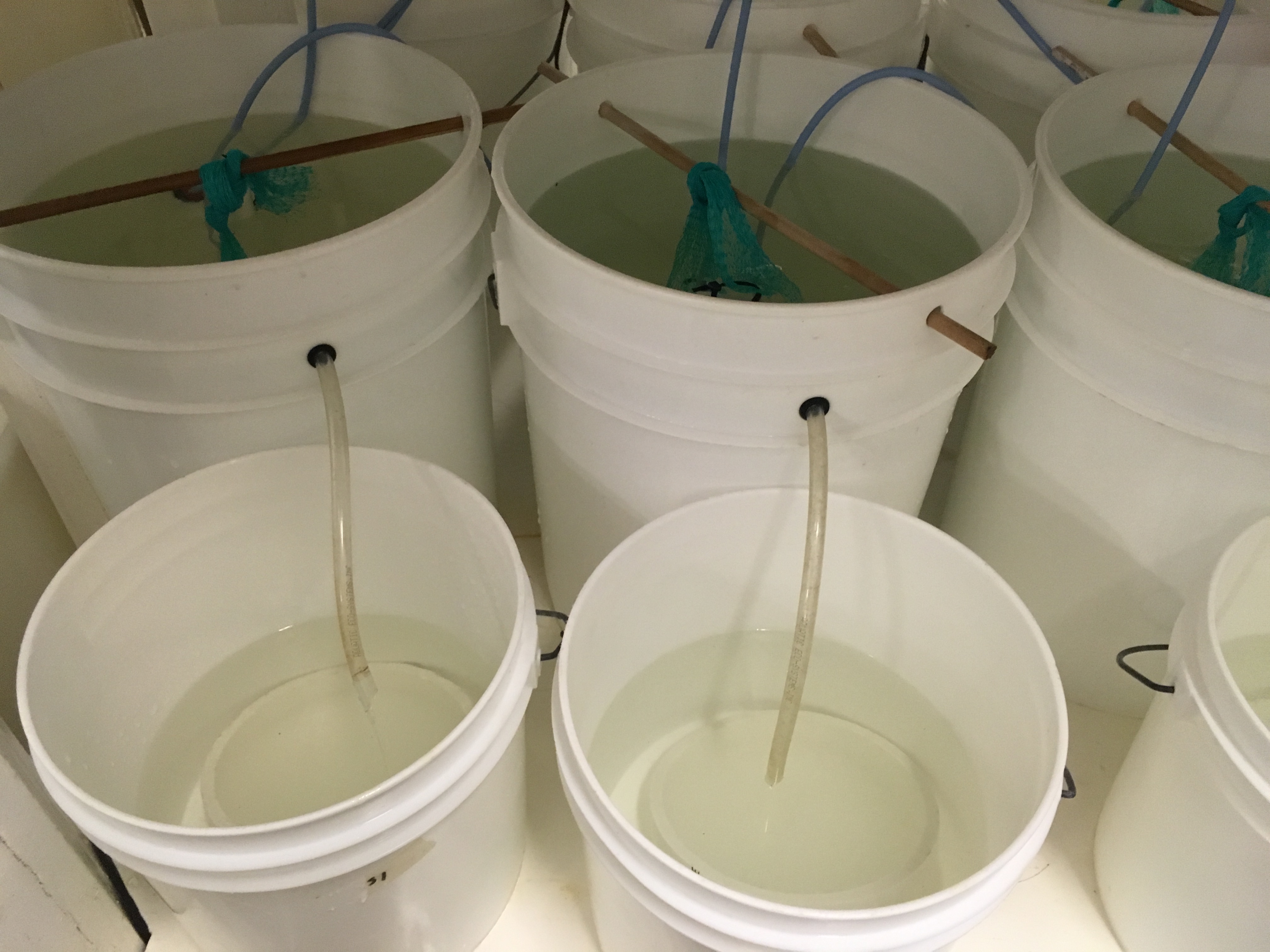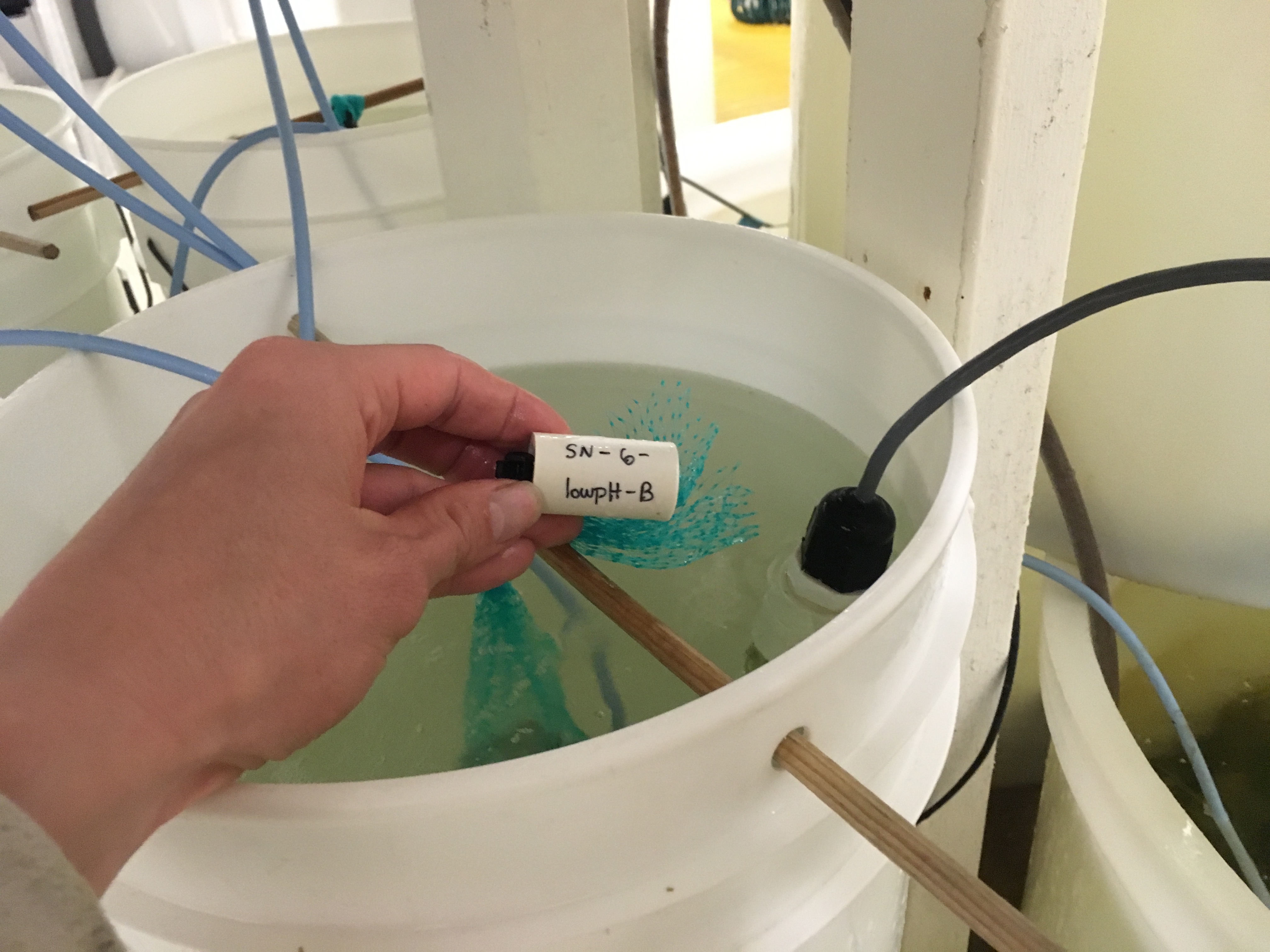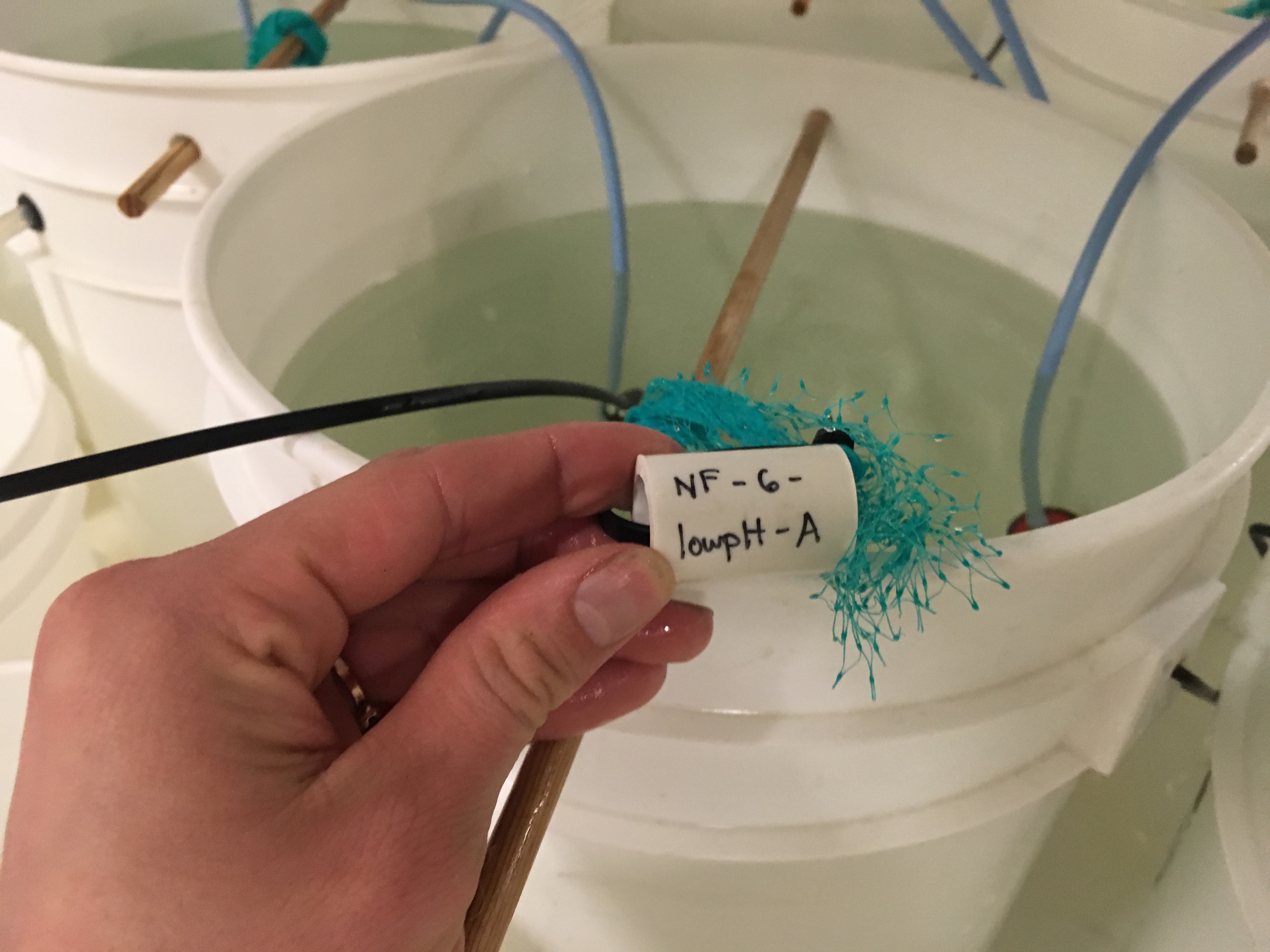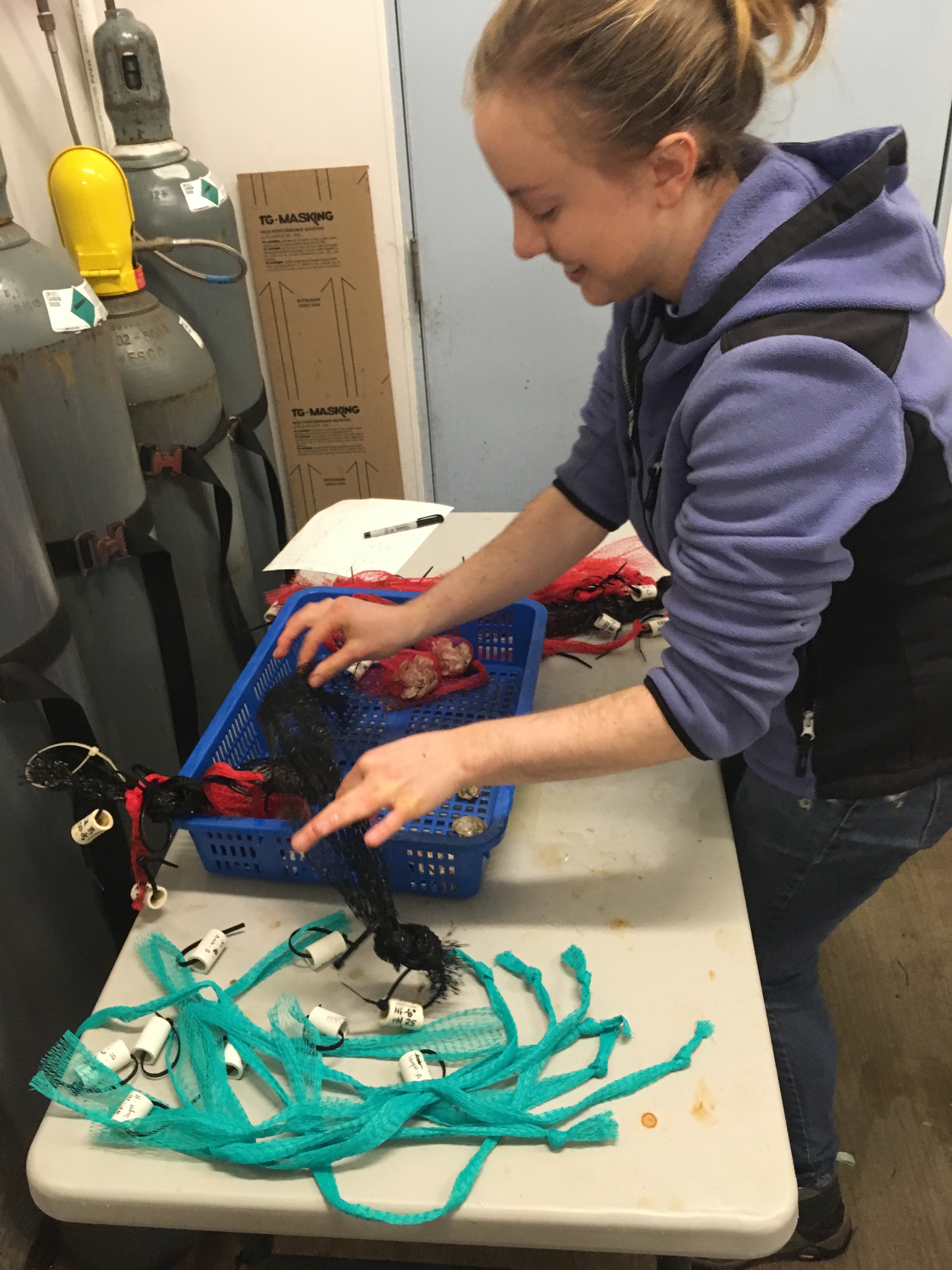Oly's get new digs
For the past few weeks Olys were all housed in a 100L tank connected to a heater/chiller, which we used to increase the temp to promote gametogenesis. The goal was 1 degC per day up to 18degC, but we weren’t able to maintain that high temp due to a weak heater, and trying to keep temp high by reducing the flow rate caused the pH to drop, so that didn’t work. I’ll download HOBO temp data, but the Oly’s were kept around 14degC from 4/11 -> 5/2. This is what the setup looked like:
And the heater/chiller used, with small pump circulating water from tank:
Spent the past couple weeks plumbing pipes for a spawning and larval rearing setup. I removed the 2 header tanks, and connected to the unions that were connected to the tanks. I moved a table to the N wall, replacing the header tanks. One connection stays on the N wall and has 16 valves (8 on top shelf of table, 8 on bottom). The other connection runs along the wall over to the large table, and provides 16 additional valves (8 top shelf, 8 bottom). I used 1/2” threaded labcock valves into 1/2” threaded T’s. Before the pipe branched between shelves I added a threaded T for the algae pump.
Needed some special hose barbs:
The Olys will be spawned in 5 gallon buckets that flow into 2 gallon buckets holding a 100um mini-banjo to collect larvae. 26L/Hr drippers will maintain consistent flow (although today I borrowed 16 L/Hr, since my drippers were delayed in shipping). Each bucket has an air stone.
I selected 2 populations to move forward in the full, replicated study: NF & SN. This selection is necessary due to space and logistics, and I selected these 2 populations due to the consistent size, life history, and number (~30 per treatment). Within these populations I have 8 treatments, and I have 2 replcates (aka 2 spawning buckets per treatment). During the pH treatment each population was split into 3 tanks/replicates (A, B, C). The NF & SN animals within each treatment group were thus pooled, and split into 2 groups for the spawning phase (A, B). Labels are now, for example: SN-6-low pH-A. SN=population, 6=overwintering temp, low pH = pH treatment group, A=spawning replicate. Here are photos of some new tags, also showing where 3 probes were placed today (5/2):
NOTE: I moved the Olys to their new buckets @ 2:00pm on 5/2, and I moved a Durafet, 3 temperature probes (2 might not be connected/logging), and the HOBO “Tank 1” @ ~2:15pm. Set algae pump to 70 (pulses/minute).
The other populations- HL & K- were not pooled nor split into two replicates. They were simply sprayed with fresh water, and all 3 pH reps (A, B, C) were put into a spawning bucket. I will be counting all larvae produced by these populations, and hope to rear some larvae as well.
An issue encountered today: there is a lot of sputtering/air in the lines, caused by the Venturi air injector. When the valve connected to the injector (that provides atmospheric air) is closed, the sputtering ceases. We need to remove the Venturi injector temporarily from the line. I hope to tackle this tomorrow, since sputtering is not consistent among the lines and thus will result in uneven flow rates.
And here’s Grace helping today! She counted live/dead oysters in all treatments, and moved animals to new bags:
